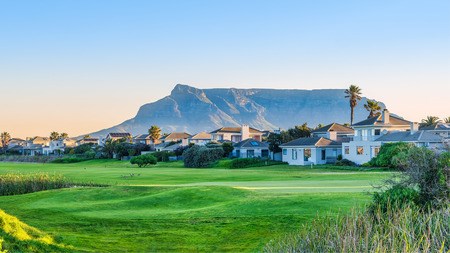There are tales of historic Constantia, the duels, the ghosts, Boer War spies, the famous and sometimes notorious figures who have added to the rich tapestry of the area. Early winemakers produced a dessert wine, found in the cellars of Napoleon and written about by Jane Austen. Queen Victoria requested a glass of “sweet Constantia” every evening after dinner.
The name Constantia is irrevocably linked to the most famous wines made in South Africa. It is the birthplace of the wine farming industry and as you drive through the beautiful historical valley it is no wonder the first Governor of the Cape, Simon van der Stel, chose this situation for his farm, Constantia. Jan van Riebeeck first brought vines to the Cape in the early 1650s and planted them in what is now the Company Gardens in central Cape Town. At that time, in the middle of the 17th century, Constantia lay outside the Cape Colony, and was known only as "woeste veld", or wild bush - a place devoid of farms or homesteads. By the time Van Riebeeck left the Cape for Batavia in 1662, one of his significant contributions to the future of the colony was the introduction of vines, and the modest beginnings of a winemaking tradition.
Constantia Valley contains some of the finest surviving examples of Cape Dutch architecture. Following the prosperity that the 18th century brought to the Cape, farmsteads - originally simple and basic - acquired gables and some of the earliest alterations dated from the mid-18th century. Many of the 63,000 slaves and political exiles brought to the Cape prior to 1815 were skilled craftsmen and women who were instrumental in the development of the architectural style found in the Cape. Some of this architecture reflects the cultural diversity and unique stylistic influences of Africa, Europe and Asia.
The area is situated in the heart of the Cape Peninsula, and is a 20-minute drive to Water Front and Cape Town central, 15 minute drive to the University of Cape Town and centrally situated to the Mowbray, Rondebosch and Royal Cape golf courses. The nearby Kirstenbosch Botanical Gardens is a must-see for tourists who appreciate sheer grandeur and the gardens are considered one of the great botanical gardens of the world.
Property in this affluent area of the Western Cape is in high demand and is known to attract the most discerning buyers. Recent statistics that have been released by Lightstone, indicate that of the 134 property sales that were concluded in the area over the last 12 months, 116 of these sales were in the over R3m price range. The average price of the total number of transfers exceeded R6m. Interestingly, there were no sales concluded in the sectional title sector of the market, however, there were seven sales concluded in estates totalling over R75m. The remainder of the sales were concluded in the freehold sector with a total Rand value of R767 765m.
Sales volumes and values were at a premium in 2008, with the average price of a sectional title property costing R7 357m and freehold property coming in at R6 888m, however, volumes had dropped in comparison to the previous 12 month period. One of the most astonishing figures in the history of sales in the area over the last eight years is that there was over R1bn worth of property sales concluded in the area in 2007, for that 12-month period.
Little wonder that the area still attracts those who relish the laid back country lifestyle that the area offers. With the most magnificent natural scenery, some of the countries foremost predominant vineyards in South Africa and splendour beyond the wildest imagination, Constantia has got to be one of the countries premier destinations: once there, you have arrived.



